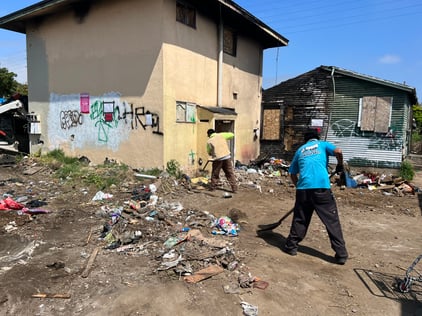It is in the best interest of every municipality in California to address the blighted, abandoned, and dangerous properties that damage property values and create risks for the entire community. This is where a city receivership program comes in and can be highly beneficial for improving such situations.
Unfortunately, many of California’s neighborhoods are affected by blight. Property owners pass away without specifying who inherits the property, mental health problems prevent people from taking care of their properties, and hoarding disorder causes homeowners to lose control over their homes. Worse, unscrupulous landlords–often referred to as slumlords–create illegal conversions, fail to perform basic maintenance and sometimes abandon properties altogether.
No matter why a property may be blighted or abandoned in your community, there is an important legal tool at your disposal: the receivership remedy.
Your city can use a city receivership program to address abandoned properties, which in turn makes your community safer.

What Is a City Receivership Program for Abandoned Properties
An abandoned property receivership is a legal solution for problematic properties that have not been able to be resolved by other measures, such as code enforcement or community outreach. After being petitioned by a stakeholder, the courts appoint a receiver to serve as a neutral third party.
Responsibilities of a court-appointed receiver
Once appointed, a receiver can perform several actions to address the problems at the property, including issues related to structural damage, trash and hazardous waste, illegal occupants, and more.
Specifically, a receiver can:
- Take possession of the property
- Manage and preserve the property
- Hire contractors to bring the building up to code
- Investigate title and liens
- Collect rents
- Manage accounting and reporting of the property’s financial situation
- Make recommendations to the court for remediation, renovation, or even demolition
- Follow the court’s directives
Why is it important to secure a receiver for an abandoned property?
Abandoned properties don’t go away on their own. They typically never resolve themselves.
They create more and more problems for the people who live in and around them. Among other things, abandoned properties are responsible for:
- Decreased property values
- Health and safety risks for unauthorized residents
- Increased rates of violent and non-violent crime
How to Take Advantage of a City Receivership Program
The process of securing a receiver takes time, but it is not particularly complicated. City and county representatives in San Diego, Los Angeles, Orange County, Riverside, and other regions with large and small populations have been able to resolve troubled properties in less than a year when using a city receivership program.
The step-by-step process usually looks something like this:
- The city identifies an abandoned property that violates local codes or ordinances.
- The city attempts to contact and notify the property owner about the violations and the need to bring the property into compliance.
- If the owner fails to take action after proper notice, the city can initiate legal proceedings by filing a petition with the appropriate court.
- The city requests that the court appoint a receiver to take over the abandoned property.
- The court reviews the case, and if it agrees with the city’s position, it can grant the city's request and appoint a receiver.
- The city is allowed to propose or nominate a specific person or company to serve as the court-appointed receiver.
- Once approved by the court, the receiver is legally empowered to take possession, secure, manage, and maintain the abandoned property per the court's orders.
- The receiver is ordered to rehabilitate or repair the violations and charge the costs back to the property owner.
- The receiver provides status reports to the court until the property is brought into compliance or the case is resolved.
As you can see, the process requires time and attention to detail, but it is also an achievable process that many California cities have already put to use.
A Receivership Success Story in Shasta County
Richardson “Red” Griswold has been appointed over 200 times in 22 counties to serve as a court-appointed receiver in California. One of those cases was by the Shasta County Superior Court, which appointed Mr. Griswold to address the dangerous conditions at a 59-unit motel in Redding called the Americana Lodge.
Check out our video with the full story, including pictures of the property– before and after our involvement.
The Americana Lodge went from a threat to the community to a thriving asset.
Looking for More Information on Securing a Receiver for Your City’s Abandoned Properties?
We’re here to talk–our team at Griswold Law can answer your questions and support your city as you make things safer for everyone in the community.
To learn more, download our Abandoned Property Receiverships Whitepaper, which is full of useful information for you and the other decision-makers in your city.
We look forward to talking with you about how we can help you improve your community. Contact us today with your questions or to schedule a time to talk.


